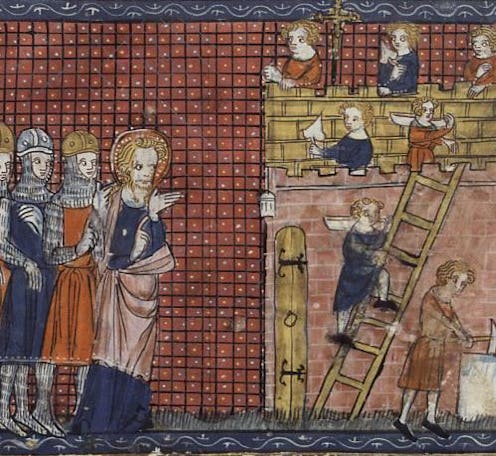Life
Was St. Valentine A Real Person?
Whether you love or hate Valentine’s Day, the mid-winter holiday that turns everything pink, red, and white is hard to ignore. While waiting on hold to make the seemingly requisite romantic dinner reservation for that special night, you may wonder, was St. Valentine a real person? And, if so, what does he have to do heart-shaped boxes of candy? The answer, it turns out, is... complicated. While a man named Valentinus was indeed martyred on Feb. 14, the origin of the historical figure behind the holiday is shrouded in mystery. Even so, the myths surrounding the patron saint of lore have endured, elevating Valentine into one of the most beloved and well-known saints — though in actuality, he may have been more than one person. (Plot twist!)
Two different martyrs by the name of Valentinus were said to be beheaded by emperor Claudius II around the Third Century A.D. Valentinus was a common name in Ancient Rome, coming from the Latin word for “worthy, strong or powerful”; indeed, the Catholic Church recognizes a dozen canonized Valentines and Valintinuses. (So, perhaps it's not the luckiest name to have. Just saying.)
The story of St. Valentine of Rome that many of us learn in school dates back to the 1400s. In this popular version of the tale, St. Valentine was a priest condemned for performing marriages secretly for young Christian lovers after they were made illegal by the emperor.
Another account describes St. Valentine as a bishop of Terni, Italy, who was also killed by emperor Claudius, while yet another claims Valentine was put to death for aiding Christians in their escape from Rome’s torturous prisons. In one enduring myth, Valentine is painted as a heroic figure who, while in confinement, fell in love with the jailer's daughter. He's said to have sent her a love letter signed, "from your Valentine" — though with considerably less red construction paper and doilies than we think of Valentines as having today. In some version, the jailer's daughter is blind; then, after Valentine is beaten, stoned, and beheaded, the legend claims that his beloved's sight was restored. How's that for romance?
When the feast of Saint Valentine was created by Pope Gelasius I in 496 A.D., even he was doubtful of the saint's deeds: He reportedly proclaimed St. Valentine a well-known name "whose acts are known only to God."
History is fairly murky, leaving us with no clear answer as to whether these were the same person or heroic tales of different Valentines conflated over time. The confusion over Saint Valentine's identity lead the Catholic Church to eliminate his name from the General Roman Calendar in 1969, although he is still officially recognized as a saint. (What is thought to be his skull rests as a relic in a Basilica church in Rome.)
Though the church has ceased liturgical veneration of him, St. Valentine's Day is still celebrated on the local level, and remains popular in America, England, and across the globe. The jury is still out on how exactly Valentine's Day became so entwined with the ideas of love and romance, but don't let that trouble you over that candle-lit dinner.
